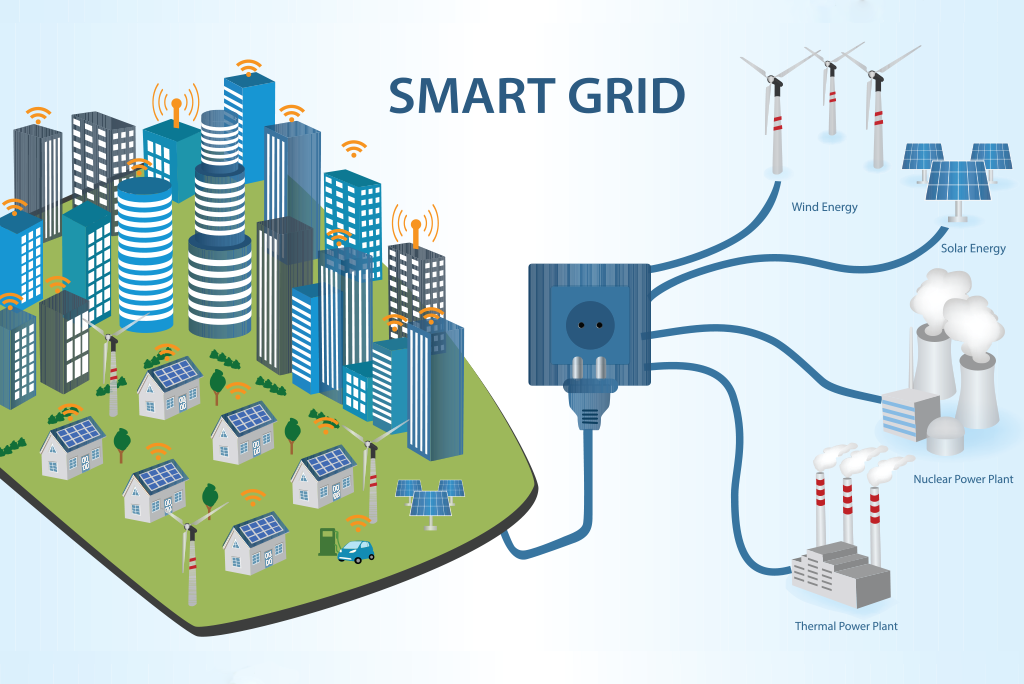

To match global demand for massive battery storage projects like Hornsdale, Tesla designed and engineered a new battery product specifically for utility-scale projects: Megapack. Since then, the facility saved nearly $40 million in its first year alone and helped to stabilize and balance the region’s unreliable grid.īattery storage is transforming the global electric grid and is an increasingly important element of the world’s transition to sustainable energy. Less than two years ago, Tesla built and installed the world’s largest lithium-ion battery in Hornsdale, South Australia, using Tesla Powerpack batteries. Introducing Megapack: Utility-Scale Energy Storage
CONNECTIVITY FOR POWER UTILITY GRIDS FULL
Tesla’s full Megapack product announcement is provided below:
CONNECTIVITY FOR POWER UTILITY GRIDS INSTALL
Interestingly enough, Volkswagen’s Electrify America also recently decided to purchase and install Tesla Powerpacks at over 100 of its charging stations, totaling a capacity of 350 kWh with 210 kW rapid charging compatibility. In South Australia, Tesla’s Hornsdale Powerpack installation ultimately became the largest lithium-ion battery in the world. The lack of diesel fumes is both a notable and welcome change. In the UK, one of the country’s largest bus operators is using Powerpacks to charge its fleet of 9 all-electric buses and has received positive reviews from both riders and drivers. The original Tesla Powerwall was launched in 2015 and has since been used for storage projects worldwide by scaling its 210 kWh capacity. It will take the place of natural gas “peaker” power plants, offering a much more efficient and clean alternative for Moss Landing’s energy needs. Under the project, Tesla’s battery-powered utility installation will store 182.5 megawatts of excess solar or wind energy to provide supplemental power during peak grid times for up to 4 hours at a time. The Megapack will be utilized for an upcoming energy storage project hosted by Pacific Gas and Electric Company (PG&E) in Moss Landing, California once final approval from the state’s Public Utilities Commission is received. This will bode well for areas with space constraints or simply desiring a smaller footprint for energy storage.

Thanks to its high-density energy storage capacity and modularity, the Megapack needs 40% less space and 10x fewer parts than comparable systems, according to data published on Tesla’s product page. Tesla’s latest product is also very competitive compared to other utility power storage options available on the market. No assembly is required, all you need to do is connect Megapack’s AC output to your site wiring,” Tesla detailed. “Every Megapack arrives pre-assembled and pre-tested in one enclosure from our Gigafactory-including battery modules, bi-directional inverters, a thermal management system, an AC main breaker and controls. Tesla’s Megapack product page further describes its “All-in-One-System” design: “Using Megapack, Tesla can deploy an emissions-free 250 MW, 1 GWh power plant in less than three months on a three-acre footprint – four times faster than a traditional fossil fuel power plant of that size,” Tesla stated in their announcement.Īlong with an AC interface, the Megapack also includes DC-connectivity for solar grids, essentially giving it plug ‘n play capability for any type of power grid interface. Megapacks also come completely assembled from Tesla’s factory for quick installation, altogether providing customers with savings in both cost and time.īattery storage grids are important in the global energy grid’s transition to sustainable energy sources, and the Megapack’s massive capacity and scalability will make it an ideal choice for regions looking for a simple and cost-efficient ways to convert or support their current infrastructure. This larger battery pack has a 60% increase in energy density over the current Powerpack and boasts up to 3 megawatt hours (MWhs) of storage capacity per pack as a result. After Tesla’s worldwide success with Powerpack battery grid installations, the company has now designed and engineered a new battery product called the Megapack made specifically for utility-scale projects.


 0 kommentar(er)
0 kommentar(er)
